Alexander the Great (of Macedon)
Alexander the Great (of Macedon) was a great military leader, the greatest conqueror, the creator of the largest monarchy in the Ancient World. Alexander of Macedon was born on 21 July 356 BC in the capital of Macedonia – the city of Pella. Alexander’s father was the Macedonian monarch Philip II, who managed to subject the most part of Greece to Macedonia. His mother came from a royal family too, she was a daughter of the king of Epirus. Alexander belonged to the noblest Argead dynasty, which ruled in 726 – 309 BC. It was believed that their family started from the legendary hero Heracles. Alexander’s main teacher was the great ancient Greek philosopher Aristotle, who aspired to give Alexander a grounding in becoming a monarch, the ruler of Greece. He taught the intended leader military arts, politics, medicine, natural sciences, he presented a copy of the Iliad to the young man, who considered it the best guidebook of the military arts and always kept it at hand.
Since he was a child, Alexander developed such features as ambition, arrogance (along with courage), bravery and self-assurance. One day he made a bet with his father that he would tame a horse, which even king Philip could not tame. Alexander won the bet and took up the horse that became his faithful companion and called him Bucephaulus. The horse accompanied Alexander during an infinitely long campaign in Asia. When Alexander was sixteen year old, he was left to rule Macedonia while Philip was engaged in a campaign in Byzantine. In the absence of his father, Alexander successfully coped with his task and ruthlessly stifled a rebellion of the Thracians. Two years later, in 338 BC Alexander of Macedon participated in the Battle of Chaeronea, when the Greek combined forces were defeated by Philip and the independence of the Greek states was put to an end. Alexander was leading the left wing of the army and demonstrated a great talent of military leading, making his father very pleased.
However, when Philip soon divorced Alexander’s mother Olympiad, and married Cleopatra – a young lady coming from a noble Macedonian family, the relationship between father and son rapidly got wrong. In 336 BC, Philip was killed on a holiday’s eve, almost at the same time his child of the second marriage was killed and Cleopatra hanged herself to death. The only legal successor of Philip was Alexander, and the army proclaimed him the king. Alexander ascended to the throne at the age of 20. He did away with those, whom he suspected in the conspiracy against his father, although it is not altogether impossible that he killed those who knew about his own participation in the murder.
After Philip’s death, the Thracians in the north started a rebellion again, while in the south the Greeks were striving to unite their forces and gain their independence back. Alexander managed to pacify the Thracians and recover his power in Greece in two years. In 334 BC, at the age of 22, he decides to execute his father’s plans and starts a campaign against the Persian Empire. During the campaign, which lasted for 10 years, Alexander manifested a unique, brilliant talent of a military commander, which gained him the fame of the greatest conqueror and creator of the largest empire in the Ancient World.
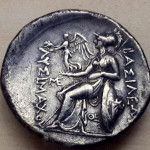
Silver tetradrachm of Lysimachus with the image of goddess Athena. Reverse. From my private collection
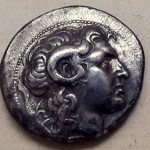
Silver tetradrachm of Lysimachus with the image of Alexander the Great. Obverse. From my private collection.
The first major battle with Persians took place in 334 BC at the Granicus river, near the ruins of Troy. The Persians lost almost 20 000 infantry troops and 2 500 cavalry. Macedonians, incurring minor casualties, begun to successfully carry forward into the deep Asia. According to a legend, in a Phrygian town Alexander cut a knot on a chariot’s pole, which was tied in the ancient times by king Gordias. The one who unties the knot was predicted to gain immortality and the power to rule the whole world. At the Syrian town of Issus Alexander wiped out the outnumbering Persian army, causing the Persian king Darius III to flee in terror, while his wife and two daughters were taken captive. Alexander occupied Phoenicia, Palestine, Syria without encountering any serious resistance, and in Egypt the priests of the Pharaoh declared him the son of the god Amun. Here, off the coast of the Mediterranean Sea, Alexander founded a city named after him – Alexandria, lest his name be ever forgotten in Egypt. In 331 BC, Alexander dealt a final blow to the army of King Darius III at the Battle of Gaugamela, then took Babylon and made it his capital. At the end of 331 BC, Macedonian troops entered Persepolis – the ancient capital of Persia, where the royal palace and the tombs of the kings were situated. Alexander the Great laid hold of the great treasures, which had been plundered from the conquered peoples for centuries. The capital was ransacked and burned by the Macedonian troops, casting a shadow over Alexander’s name and fame of a great conqueror. In 328 BC, Alexander undertook a campaign against Bess, a former attendant of King Darius; and after defeated him, Alexander conquered the Central Asia.
Inebriated by his success, Alexander dreamed about new campaigns and the conquest of the entire world. He took a campaign to India, but the war over the Indus river did not bring the long-awaited and final victory; the army was exhausted, and in 325 BC he turned back to Babylon. The long absence of Alexander led to a dissatisfaction of the noble Persian, Greek and Macedonian generals, who wanted to get out of his power and sought independence for their acquired dominions. The former companions of Alexander were annoyed by his desire to rule as an eastern ruler, his claims of religious worship, his closer relationships with the priests and the local aristocracy. After returning from India, Alexander dealt ruthlessly with the rebellious peoples and disobedient satraps, and dealt with his former associates without mercy. At the same time, he was preparing for a new African campaign and conceived a number of other great projects. In early June, 323 BC Alexander the Great became suddenly ill, and a few days later, on June 13, at the thirty-third year of his life, he unexpectedly died in the capital of his vast state – the city of Babylon. The death of the great military leader led to the disintegration of the largest ancient empire.
There is even a prophecy in the Bible about Alexander the Great. When Babylon was still a world power, the Bible prophecy foretold that it would be conquered by a symbolic ram with two horns representing “the kings of Media and Persia” (Daniel 8:20). As it was predicted, Medo-Persia became the next world power, having conquered Babylon in 539 BC. After a while, the “goat”, indicating Greece, “struck the ram and broke his two horns” (Daniel 8:1-7). This occurred in 332 BC., when Greece defeated Medo-Persia and became the new world power.
Here is what was going to happen next, according to the prophecy, “Then the goat magnified himself exceedingly; but when he was strong, the great horn was broken, and in its place came up four horns” (Daniel 8:8). What does this mean? The Bible says, “And the rough goat – the king of Greece: and the great horn that is between his eyes is the first king; He was defeated, and instead of him four stood up: it is – the four kingdoms shall stand up out of the nation, but not in his power.” (Daniel 8:21-22).
History shows that this “king of Greece” was Alexander the Great. After his death in 323 BC his empire was divided among four generals: Seleucus Nicator, Cassander, Ptolemy Lagus and Lycimachus. In strict accordance with the biblical prophecy, “instead of him the four stood up.” However, as it was also predicted, none of them ever had so much power as Alexander. Thus, after two hundred years the biblical prophecy was completely fulfilled.
There is one very interesting exhibit in my collection, a silver tetradrachm of Lysimachus1. The tetradrachm was minted in Alexandria during the period from 297 to 281 BC. The obverse of the coin features a portrait of Alexander the Great (of Macedon) in the diadem with the horn of Ammon, on the reverse of the coin the goddess Athena is depicted, the patron of king Lysimachus. The diameter of the coin is 29 mm, its weight is 16.34 grams. It is believed that the coin of Lysimachus represents the best image of Alexander the Great ever made. There is a version that it was taken from the precious stone, on which the engraver carved the portrait of Alexander. It should be noted that at the beginning of his reign, Lysimachus used the coins of Alexander the Great for circulation, but later changed them a bit, replacing the name of Alexander with his own name, but the type of the coins remained the same. In 297 BC, Lysimachus issued a new type of coins: the obverse depicted an idealized portrait of Alexander the Great with the horn of Ammon, on the reverse there was an image of goddess Athena, the patron of Lysimachus.
Lysimachus1 (361-281 BC) – the Diadochus (general) of Alexander the Great, ruler of Thrace from 324 BC, the king of Macedonia from 285 to 181 BC.
Один комментарий
Leave a Comment
You must be logged in to post a comment.

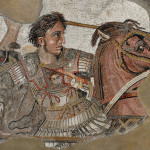
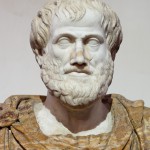
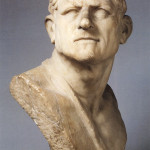
Лисимах правил Македонией еще 100 лет после смерти? Много еще такого в тексте?)